Full Body Stretch Routine : Boost Mobility & Flexibility
When I woke up feeling stiff, I knew I had to make a change. Many of us feel trapped by limited mobility. But, starting a full body stretch routine changed everything for me.
Think about unlocking your body’s full potential with simple stretches. These can make a big difference in how you move every day. Studies show that regular stretching can cut injury risks by 25% and boost athletic performance by 10%.
Your body is meant to move and stretch. A full body stretch routine can help you break free from physical limits. It’s great for athletes, office workers, or anyone looking to improve their health.
Table of Contents
Key Takeaways
- Reduce injury risk by up to 25% through regular stretching
- Improve athletic performance and flexibility
- Enhance daily movement and body awareness
- Decrease muscle soreness by 30%
- Increase overall range of motion and mobility
Understanding the Importance of Full-Body Mobility
Mobility is key for athletic performance and daily movement. It lets your body move freely and efficiently. This can greatly improve your life, prevent injuries, and boost physical abilities.
Benefits of Regular Stretching
Stretching regularly has many health benefits. Studies show that adding flexibility training to your routine can:
- Improve joint range of motion
- Reduce muscle tension
- Enhance overall physical performance
- Support better posture
Impact on Daily Movement and Performance
Regular mobility work makes daily movements smoother and more comfortable. Injury prevention stretches keep you flexible. This makes everyday tasks easier and lowers the risk of injury during physical activities.
Athletes and fitness lovers benefit a lot from a good mobility routine. Dynamic stretching before and after workouts improves muscle readiness and recovery.
Role in Injury Prevention
Mobility training is vital for avoiding injuries from sports and exercise. It boosts flexibility and muscle elasticity. This creates a protective layer that reduces the chance of strains, sprains, and chronic pain.
Consistent flexibility training can lower injury risks by up to 50% in high-intensity physical activities.
Stretch at least three times a week, holding each stretch for 15-30 seconds. Pay attention to your body and avoid pushing too hard. This keeps your mobility training safe and effective.
Getting Started: Essential Preparation Tips
Getting your body ready for stretching is all about planning and knowing what to do. A good warmup before working out is key to avoiding injuries and improving flexibility. Dynamic stretches are especially important for getting your muscles ready for more intense activities.
“Approach mobility exercises with a slow and deliberate pace to allow for greater control and precision.” – Dr. Stacie Barber, Physical Therapist
Before starting your stretching routine, keep these tips in mind:
- Start with a light cardio warm-up to raise your body temperature
- Do dynamic stretches that match your workout plan
- Pay attention to your body and don’t push too hard
- Use a pain scale, keeping stretching pain below level six
The World Health Organization says you need 150 minutes of cardio a week. Stretching is just as important for staying fit. Beginners should stretch for 5-10 minutes a few times a week. Dynamic stretches are great before workouts because they:
- Boost muscle flexibility
- Improve range of motion
- Lower the chance of getting hurt during workouts
- Get your muscles ready for harder physical activities
Pro tip: You don’t need special equipment to start stretching. Simple tools like resistance bands or a towel can make your routine better, but they’re not needed to begin.
The Science Behind Flexibility Training
Flexibility training is more than just stretching. It’s about how your muscles and tissues work together. It’s not just about touching your toes. It’s about how your muscles, fascia, and nerves interact.
How flexible you are depends on many things. Studies show that static stretching is key. It helps you move better and lowers injury risks.
Muscle and Fascia Anatomy
Muscles and fascia are like a network in your body. They affect how you move. Important facts include:
- Collagen affects how elastic your tissues are
- Nerve endings control how muscles react to stretching
- Muscle fibers change with regular stretching
Types of Stretching Methods
There are different ways to stretch, each with its own benefits:
- Static Stretching: Holding a stretch for 15-60 seconds
- Dynamic Stretching: Stretches that involve moving
- Proprioceptive Neuromuscular Facilitation (PNF): Uses muscle contraction and relaxation
Optimal Timing for Stretching
When you stretch matters a lot. Dynamic stretches are best before exercising. Static stretches are best after to help relax muscles.
Regular stretching can significantly improve joint mobility and reduce the risk of muscle imbalances.
Full Body Stretch Routine for Daily Practice
Creating a regular full body stretch routine can greatly improve your daily movement and health. Flexibility exercises are not just for athletes. They are vital for anyone wanting better movement and less muscle tension.
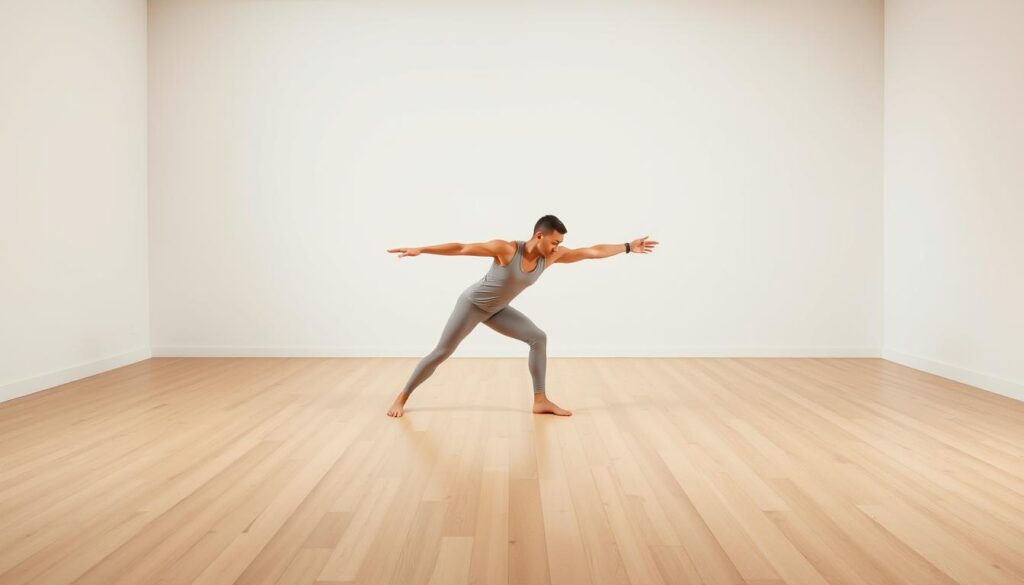
Your daily stretching should mix dynamic and static stretches for best results. Studies show a good routine can boost flexibility by up to 30% in just four weeks.
- Dynamic stretches activate muscles through full range of motion
- Static stretches help lengthen and relax muscle groups
- Recommended practice: 6 dynamic and 6 static stretches
To make a great full body stretch routine, focus on key muscle groups. Quality is more important than quantity, hold each stretch for 15-60 seconds.
- Start with neck and shoulder mobility
- Progress to arm and chest stretches
- Move to lower body flexibility exercises
- Conclude with core and spine movements
Being consistent is key. Adding these exercises to your daily routine can greatly enhance your body’s function. It can also lower injury risk and help you relax.
A 10-15 minute daily stretching commitment can create significant long-term mobility improvements.
Dynamic Stretches for Upper Body Mobility
Unlock your body’s full potential with dynamic stretches that boost upper body mobility. These stretches prepare your muscles for peak performance. They are more than just warm-ups. They improve flexibility, reduce injury risk, and enhance physical function.
Your upper body is key for daily activities and sports. Mobility drills can greatly improve your range of motion and muscle readiness.
Shoulder and Chest Openers
Dynamic stretches for shoulders and chest can greatly improve mobility and prevent injuries. Try these effective movements:
- Arm circles to activate shoulder muscles
- Cross-body arm swings targeting biceps and triceps
- Chest expansion movements to improve posture
Neck and Upper Back Movements
Reduce tension and increase flexibility with gentle, controlled neck and upper back stretches. Slow, deliberate movements can help release muscle stress and improve mobility.
Arm and Wrist Mobility Drills
Wrist and arm mobility is key to preventing strain in various activities. Key drills include:
- Wrist circles to warm up forearm muscles
- Arm huggers targeting upper back muscles
- Controlled rotational movements
Start slowly, listen to your body, and stay hydrated during these stretches. Regular practice of these drills will improve your upper body’s flexibility and lower injury risk.
Lower Body Flexibility Exercises
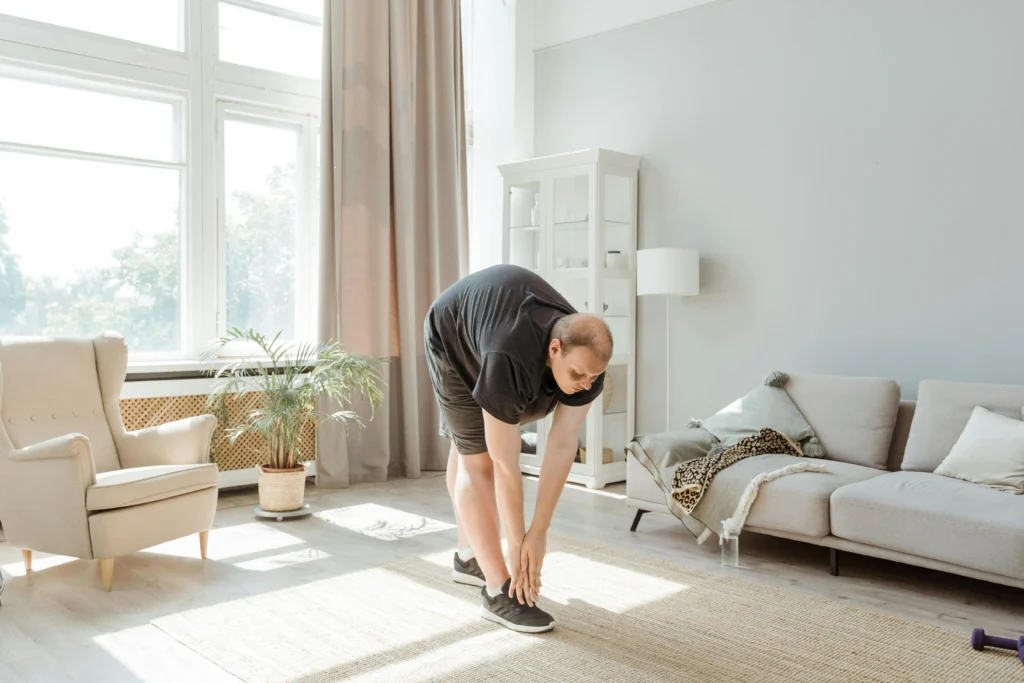
Unlocking your lower body’s full potential requires targeted flexibility exercises. These exercises enhance mobility and prevent injuries. Muscle tightness can make simple tasks like walking or climbing stairs hard.
Static stretching is key for lower body flexibility. Studies show it can improve range of motion by 20-30% in 6-8 weeks. It also reduces muscle strain and boosts performance.
- Hip and Glute Stretches: Target large muscle groups to reduce lower back pain
- Hamstring Flexibility: Essential for reducing injury risk in running and cycling
- Quad and Calf Stretches: Improve mobility and prevent muscle tightness
“Stretching is not just about flexibility, it’s about creating a resilient and adaptable body” – Sports Medicine Expert
Your lower body flexibility routine should include both dynamic and static stretching. Athletes who regularly stretch are 50% less likely to get injured. This is compared to those who don’t stretch.
Key flexibility exercises to add to your routine:
- Seated Inner Thigh Stretch
- Lunging Hip Flexor Stretch
- Standing Quad Stretch
- Calf Stretch Against a Wall
Pro tip: Stretch each major muscle group 2-3 times a week for best results. Regular practice can greatly improve mobility and lessen muscle soreness.
Core and Spine Mobility Techniques
Your core and spine are key to your body’s flexibility. They help improve your posture, reduce back pain, and boost your movement. Doing exercises that focus on these areas can help prevent injuries and make you more flexible.
It’s important to know how your core and spine work together. If they’re not flexible, you might move in ways that can hurt you.
Rotational Movements
Rotational exercises keep your spine and core strong. They work many muscles and help your body move better:
- Seated spinal twists
- Standing trunk rotations
- Cat-cow pose variations
Extension and Flexion Exercises
Trying different spinal positions keeps your discs healthy and prevents stiffness. Important stretches include:
- Cobra pose for spine extension
- Child’s pose for flexion
- Supine spinal twists
Lateral Stretches
Lateral movements are vital for a flexible spine. They work the muscles on your sides and improve your flexibility:
| Exercise | Reps | Focus Area |
|---|---|---|
| Standing side bends | 8-10 | Obliques |
| Seated lateral stretches | 6-8 | Spine flexibility |
| Side plank variations | 10-12 | Core stability |
Remember to breathe deeply and move slowly during these mobility drills to maximize effectiveness and prevent strain.
Progressive Mobility Training Strategies
Starting a mobility journey can change your life. It’s all about improving how well your joints move. Begin with small steps and gradually get more intense.
Make a plan for your mobility workouts. Focus on important areas like hips, spine, and shoulders. Spend 10-15 minutes each day on soft tissue exercises. This helps with tight spots like hip flexors and shoulder blades.
It’s important to keep getting better. Start with easy exercises and get harder as you get more comfortable. Pay attention to your body and take breaks when needed. This way, you’ll see better joint health and perform better.
Use tools like foam rollers or bands to help your training. Keep track of how well your joints move and change your routine as needed. Being patient and consistent will help you keep up a good mobility routine for the long term.


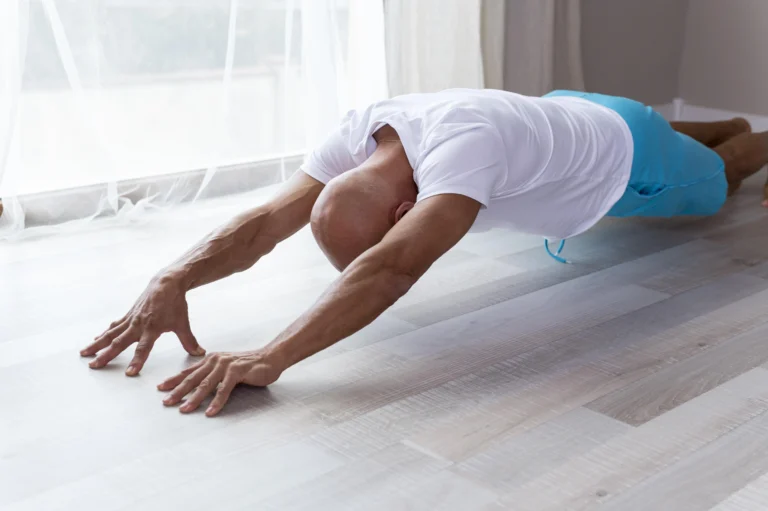
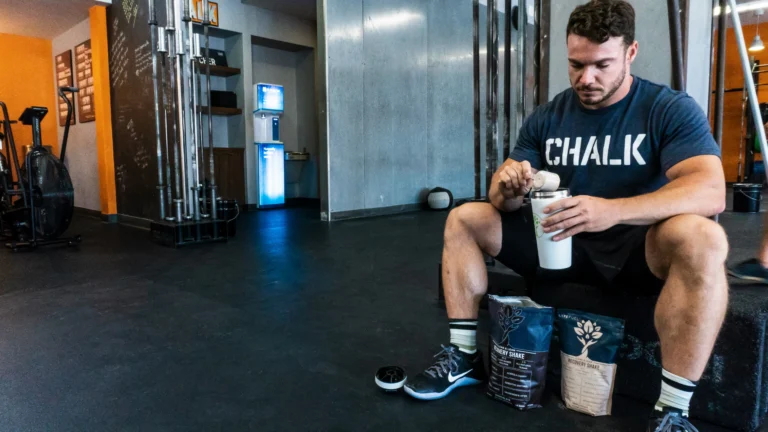
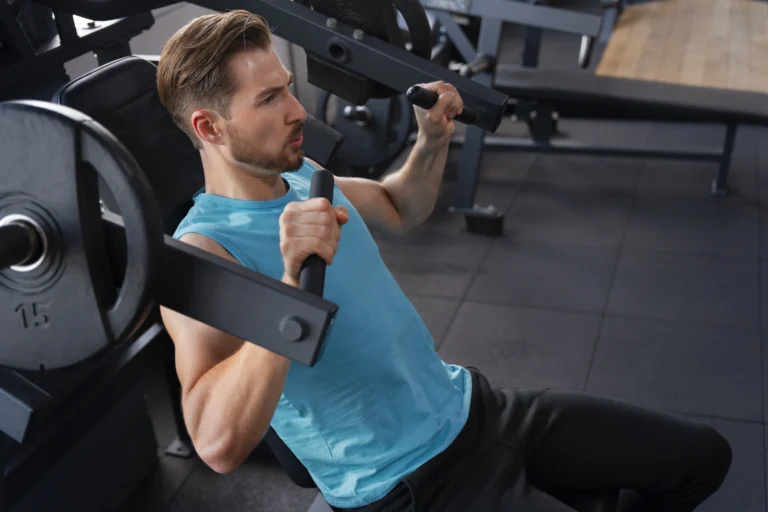

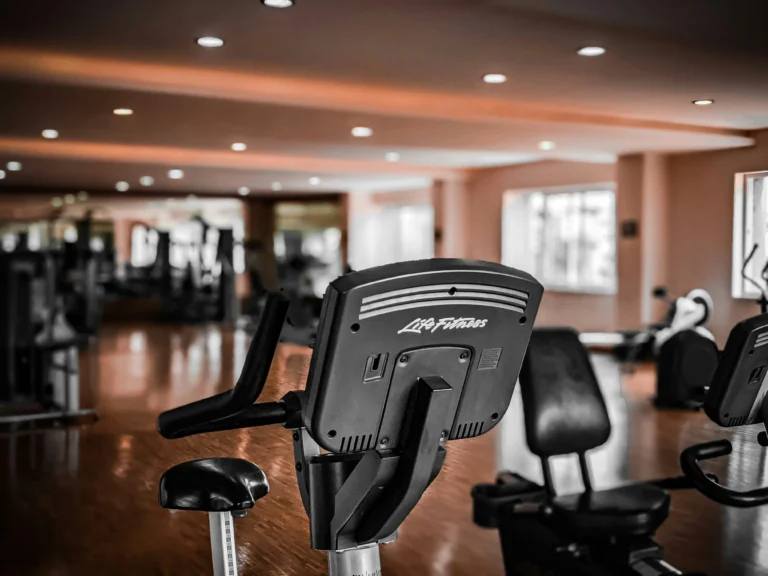
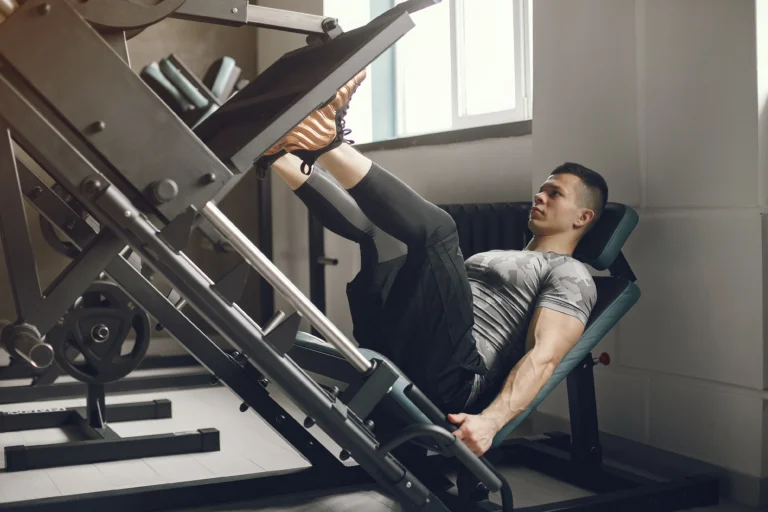
One Comment
Comments are closed.